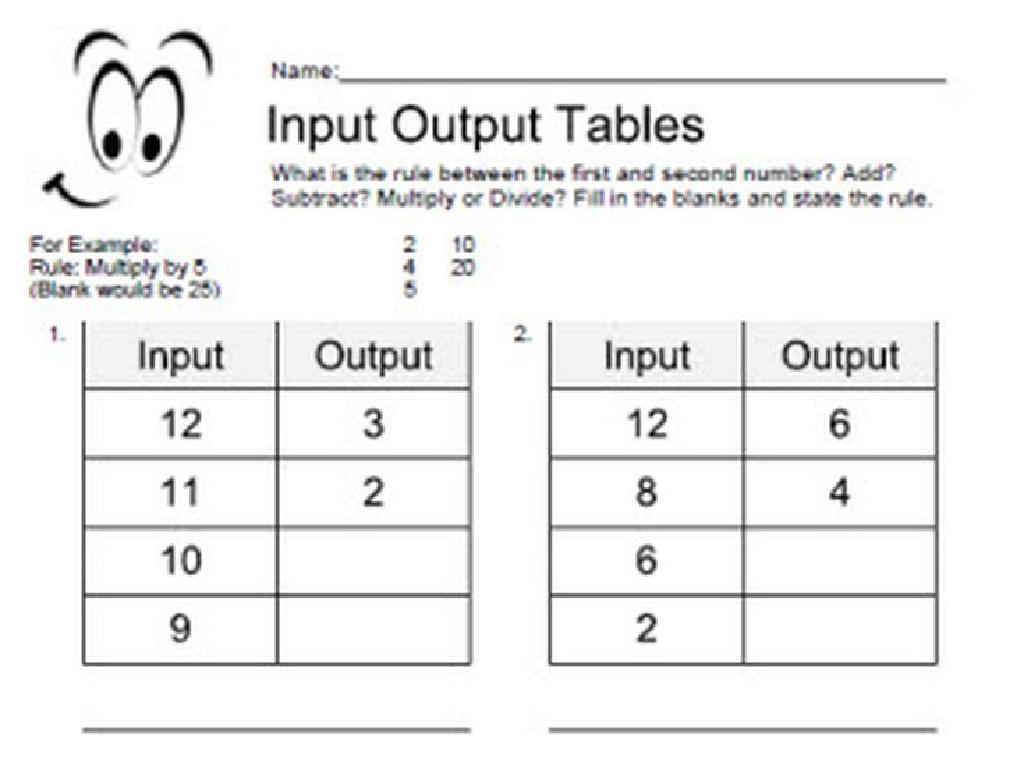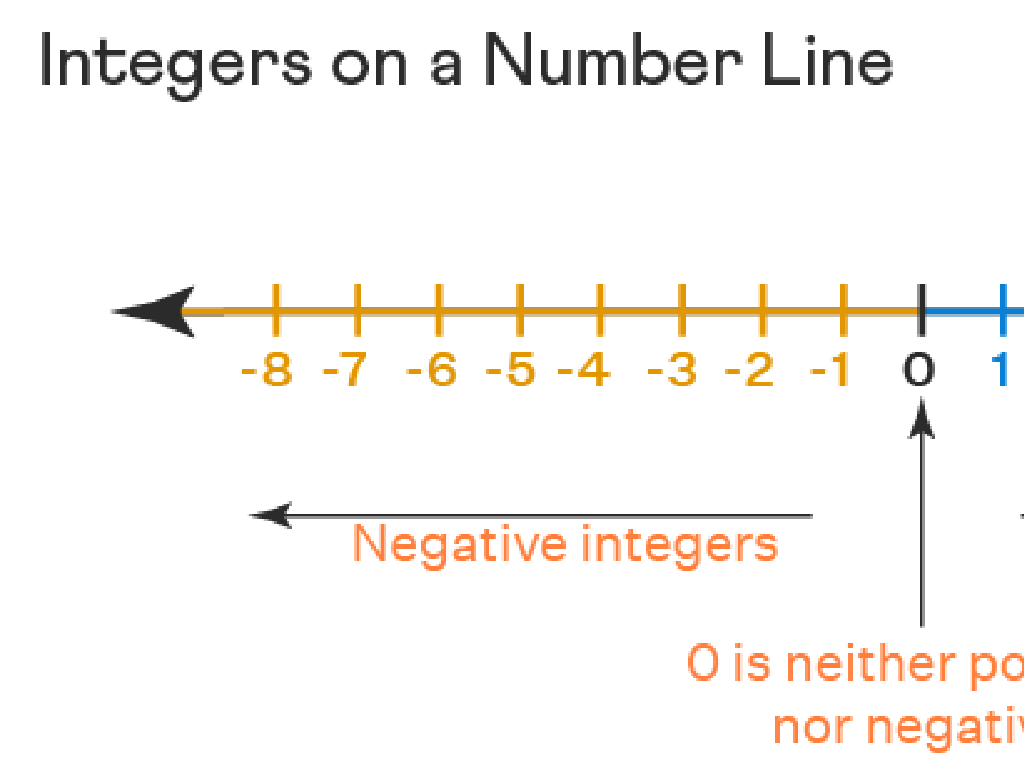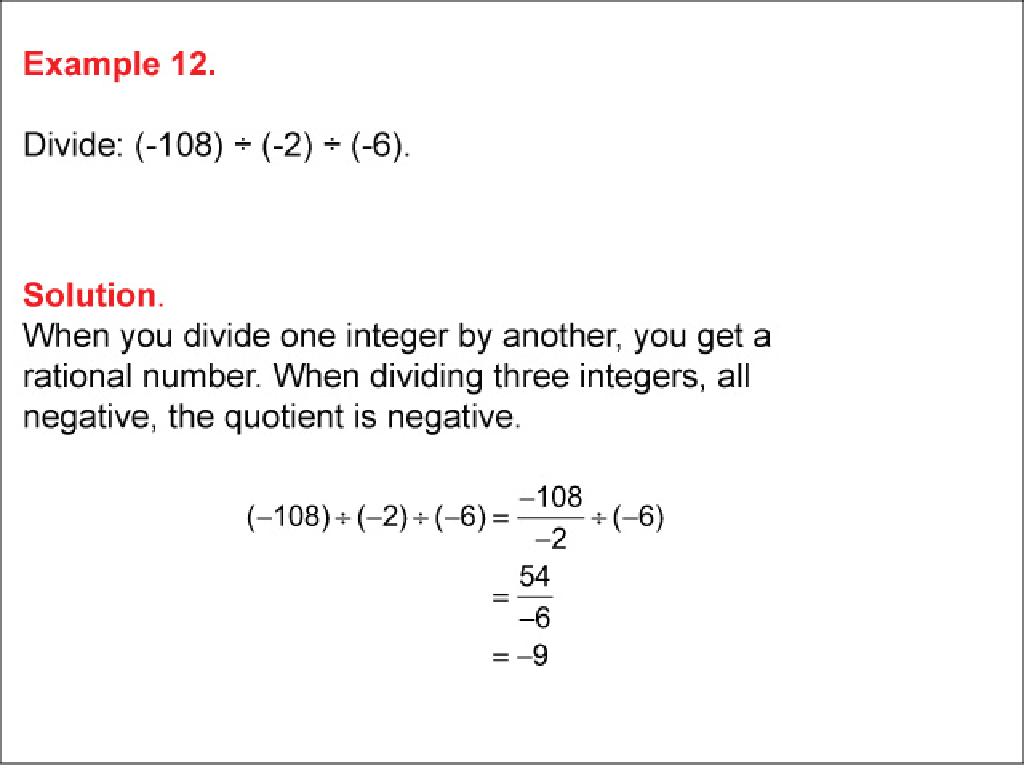Add, Subtract, Multiply, And Divide Decimals: Word Problems
Subject: Math
Grade: Fifth grade
Topic: Mixed Operations: Decimals
Please LOG IN to download the presentation. Access is available to registered users only.
View More Content
Mixed Operations with Decimals
– Grasping decimal basics
– Decimals represent fractions of a whole, like money: $0.25 is a quarter of a dollar.
– Exploring mixed operations
– Mixed operations involve addition, subtraction, multiplication, and division.
– Applying decimals in real life
– Use decimals when dealing with money, measurements, and time.
– Practice with word problems
– Solve problems involving purchases, cooking recipes, and time calculations.
|
This slide introduces students to the concept of mixed operations with decimals, which is a crucial skill in everyday life. Begin by ensuring students have a solid understanding of what decimals are and how they represent parts of a whole. Explain that mixed operations are just combining different mathematical operations such as addition, subtraction, multiplication, and division. Provide relatable examples such as calculating change, measuring ingredients for a recipe, or determining the duration of events. Encourage students to think of other examples where they use decimals. Conclude with word problems that apply these concepts, reinforcing their understanding through practical application.
Adding Decimals in Word Problems
– Line up decimal points vertically
– Ensure decimals are in a column for easy addition
– Follow addition steps with examples
– Example: 0.75 (3 apples) + 1.50 (6 bananas) = 2.25 total
– Practice: Add grocery bill prices
– Calculate total cost of items on a grocery bill
|
When teaching students to add decimals, emphasize the importance of aligning the decimal points to ensure accurate addition. Use clear examples, such as adding the cost of apples and bananas, to demonstrate the process. For the practice problem, present a grocery bill with various items and prices, and guide the students through adding the prices to find the total cost. Encourage students to check their work by estimating the sum before adding to see if their answer is reasonable. This slide aims to build confidence in solving word problems involving decimal addition by applying a systematic approach.
Subtracting Decimals in Word Problems
– Rules for decimal subtraction
– Example: Change from a purchase
– If an item costs $5.25 and you pay with $10, how much change do you get?
– Class practice with distances
– Measure two distances and find the difference
– Ensure decimal points align
– Stack numbers vertically, decimal under decimal
|
This slide introduces the concept of subtracting decimals through real-world applications. Start by explaining the rules, such as lining up the decimal points and adding zeros if necessary. Use an example of calculating change to make it relatable. For class practice, use a scenario where students subtract distances, such as the length of two paths. Emphasize the importance of precision in placing decimal points. The teacher should prepare additional examples and encourage students to come up with their own subtraction problems. Provide guidance on common pitfalls and ensure students understand the concept of ‘borrowing’ when subtracting larger digits from smaller ones.
Multiplying Decimals: Find the Area
– Place the decimal in products
– Count total decimal places in factors to place in product
– Multiply by whole numbers
– Similar to whole number multiplication, align numbers right
– Multiply by decimals
– Line up the numbers, ignore the decimals, then place it in the answer
– Area of a rectangle example
– Length 3.5 cm, width 2.1 cm, area = length x width
|
This slide focuses on teaching students how to multiply decimals, which is a key skill in dealing with real-world measurements and data. Start by explaining the importance of correctly placing the decimal point in the product by counting the total number of decimal places in the factors. Show how multiplying by whole numbers is similar to what they already know, but with the added step of placing the decimal. Then, demonstrate multiplying by decimals, emphasizing the alignment of numbers and the placement of the decimal in the final answer. Use the example of finding the area of a rectangle with decimal side lengths to provide a concrete application of the skill. Encourage students to practice with additional examples and ensure they understand each step before moving on.
Dividing Decimals in Word Problems
– Divide decimals by whole numbers
– Just like whole numbers, but watch the decimal place
– Move the decimal to divide by decimals
– Shift the decimal in both numbers, then divide as usual
– Example: Splitting a bill
– If a $45.60 bill is shared by 4, each pays $11.40
– Practice with real-life scenarios
|
This slide introduces students to the concept of dividing decimals, both by whole numbers and other decimals. Start by explaining the process of dividing a decimal by a whole number, ensuring to align the decimal point in the quotient as it is in the dividend. Then, demonstrate how to move the decimal point to the right in both the dividend and divisor until the divisor is a whole number. Use the example of dividing a bill among friends to illustrate a practical application of this skill. Encourage students to come up with similar word problems and solve them as a class. Provide additional real-life scenarios for practice to solidify their understanding.
Mastering Decimal Operations in Word Problems
– Comprehend the problem’s context
– Determine the right operation
– Is it asking to combine, compare, or separate amounts?
– Step-by-step problem-solving
– Break down the problem and solve each part
– Example: Combining operations
– E.g., Buying a toy for $15.75 and a book for $8.40. What’s the total cost?
|
This slide aims to equip students with strategies to tackle word problems involving decimals. Start by ensuring they understand the context and what the question is asking. Discuss keywords that signal different operations: ‘total’ for addition, ‘left’ for subtraction, ‘times’ for multiplication, and ‘shared equally’ for division. Walk through a step-by-step approach to solve a problem, emphasizing the importance of organizing their work. Use an example that combines operations, such as calculating total cost, to illustrate how to apply multiple steps. Encourage students to practice with similar problems and to always double-check their work.
Group Activity: Decimal Word Problems
– Break into small groups
– Each group receives word problems
– Problems will involve adding, subtracting, multiplying, and dividing decimals
– Solve problems using mixed operations
– Use paper or whiteboards for calculations
– Present and discuss solutions
– Share your group’s answers and methods
|
This group activity is designed to foster collaborative problem-solving skills among students. Divide the class into small groups, ensuring a mix of abilities in each group to promote peer learning. Provide each group with a unique set of decimal word problems that require a combination of addition, subtraction, multiplication, and division to solve. Encourage students to discuss the problems within their groups and come up with solutions together. After solving, each group will present their solutions to the class, explaining their thought process and the operations used. This will not only help students articulate their understanding but also expose them to different approaches to solving the same problem. Possible activities could include shopping scenarios, measuring tasks, or calculating time differences.
Class Activity: Decimal Operations Relay
– Line up in teams for the relay
– Each member solves a problem step
– Focus on one operation: add, subtract, multiply, or divide
– Race to solve the decimal problem
– The first team to finish with the right solution wins
– Discuss the correct answers together
– We’ll review each step and answer as a class
|
This activity is designed to encourage teamwork and reinforce the concept of decimal operations through a fun and interactive relay race. Divide the class into small teams and provide each team with a multi-step word problem involving addition, subtraction, multiplication, and division of decimals. Each team member will be responsible for one operation in the sequence. The first team to complete all steps correctly wins. After the activity, go through the problem as a class to ensure understanding of each step. Possible variations of the activity could include different word problems for each team, timed rounds, or a ‘relay’ where students pass the problem to the next team member after completing their step.
Wrapping Up: Decimals in Action
– Review of decimal operations
– Practice makes perfect
– Homework: Mixed operations worksheet
– Solve real-world problems involving addition, subtraction, multiplication, and division of decimals.
– Keep practicing at home!
– Try to complete the worksheet independently to test your understanding.
|
As we conclude today’s lesson on decimal operations, it’s crucial to emphasize the importance of practice in mastering these concepts. The homework assignment is a worksheet that includes a variety of word problems requiring the students to add, subtract, multiply, and divide decimals. This will help reinforce today’s learning and improve problem-solving skills. Encourage students to attempt the worksheet on their own to assess their understanding. In the next class, we will review the homework answers and clarify any doubts. Remember, consistent practice is key to becoming confident in working with decimals.





